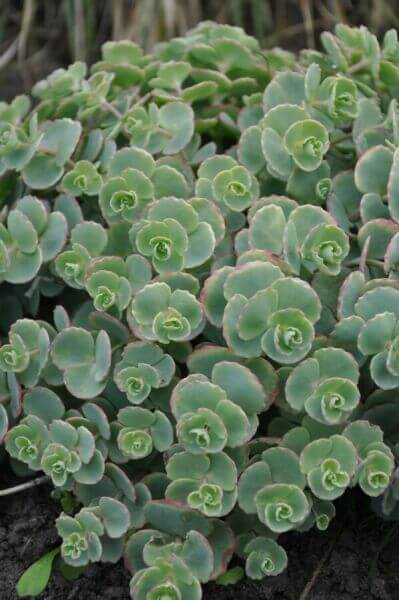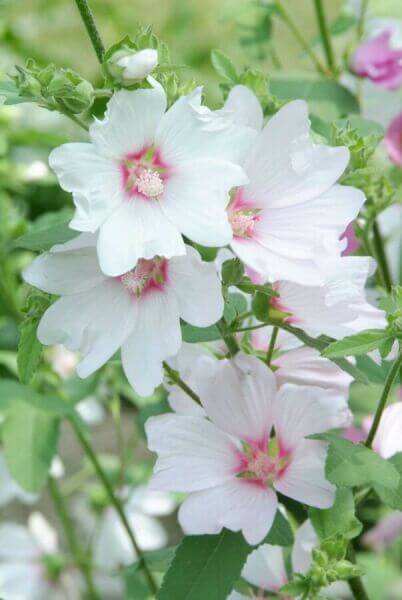Best Hedging Plants For Garden Privacy
Best Hedging Plants For Garden Privacy
Blog Article
Hedge Plants For Sharp Edges
Enhance your garden's appeal with lavish hedge ranges such as Yew (Taxus), Thuja, Laurel, Photinia, and Bamboo, commemorated for their structural stability and environmental benefits.
Yew and Thuja offer evergreen protection and winter season strength, while Laurel offers fast development and broad, aromatic leaves.
Photinia adds seasonal beauty with its lively red foliage, and Bamboo provides a low-maintenance, serene ambiance.
These hedges improve air quality, reduce noise, and produce tranquil, personal areas.
Correct planting, spacing, and upkeep ensure energetic development and environmental harmony.
Explore how these rich varieties can raise your garden's appeal and wellness.
Secret Takeaways
Change Your Garden With Lush Hedge Varieties
- Select Yew for its dense, evergreen development and unparalleled longevity.
- Go with Laurel for its quick development and broad leaves, ensuring quick personal privacy.
- Choose Photinia for its vibrant seasonal foliage, which turns a striking dark red.
- Utilize Bamboo for a low-maintenance, winter-hardy hedge with aesthetic appeal.
- Area plants 2-3 per meter and prune frequently for ideal growth and health.
Popular Hedge Plants
When transforming a garden with lush hedge ranges, it's essential to consider popular hedge plants such as Yew, Thuja, Laurel, and Photinia due to their special attributes and benefits.
Yew (Taxus) is extremely respected for its longevity and dense, green development, making it a prime choice for enduring landscapes.
Thuja is kept in mind for its evergreen foliage and robust winter season durability.
Photinia adds seasonal vibrancy with red leaves that darken over time, producing vibrant visual appeal.
Laurel offers quick growth and aromatic, broad leaves, suitable for quick personal privacy.
In Addition, Bamboo is an exceptional choice for atmosphere, providing a low-maintenance, winter-hardy alternative that improves the garden's aesthetic with its elegant, swaying walking canes.
These selections cater to a variety of horticultural needs and preferences.
Advantages of Garden Hedges
Garden hedges provide a wide range of advantages, making them a valuable addition to any landscape. These natural barriers are cost-effective to implement and offer substantial wind protection, improving air flow and adding to noise reduction. The thick foliage of hedges like Thuja and Beech makes sure privacy by obstructing presence, creating a peaceful and secluded environment.
Hedges likewise play an important function in microclimate regulation, offering a steady environment that cultivates plant development and reduces temperature level fluctuations. Their elaborate leaf structures filter contaminants, enhancing air quality and adding to a much healthier garden ecosystem.
Moreover, hedges master sound decrease, soaking up and deflecting sound waves to lower ambient noise levels. This dual functionality of providing both visual and acoustic personal privacy improves the general harmony and aesthetic appeal of any garden.
Planting and Upkeep Tips
For a successful hedge, meticulous preparation of the planting area is crucial. Make sure the soil has correct pH and drain to support strong root advancement.
Area the plants appropriately for the selected species. Water the hedge often during its preliminary growth phase, changing as required with seasonal modifications.
Execute a methodical pest control and disease avoidance method, utilizing chemical or organic treatments when needed. Routinely examine for aphids, mites, and fungal infections.
Apply mulch to maintain wetness and suppress weeds. Seasonal pruning promotes thick development and air flow, essential for plant health.
Following these standards will help you cultivate a lively, properly maintained hedge that boosts the charm of your garden.
Spacing and Trimming Standards
Spacing and Cutting Standards
Proper spacing and cutting are vital for cultivating healthy, aesthetically appealing hedges. Appropriate spacing guarantees each plant gets adequate nutrients, light, and airflow.
Follow these standards for optimal hedge upkeep:
- Spacing: Position hedge plants 2-3 plants per meter to encourage robust growth.
- Pruning Methods: Routine pruning is vital for maintaining preferred hedge height and shape. Trim brand-new development in summer and cut down older wood during winter season.
- Seasonal Care: Adjust cutting approaches and schedules according to seasonal requirements to ensure plant health.
- Hedge Height: Routinely monitor and trim to maintain the wanted hedge height and accomplish consistent visual appeals.
Following these actions will ensure your hedge prospers, enhancing both the appeal and functionality of your garden.
Selecting the Right Hedge
Picking the Right Hedge
Selecting the suitable hedge involves assessing aspects such as mature height, foliage density, and environmental strength. Successful hedge plant choice needs comprehending each species' growth qualities and site-specific versatility.
For instance, Yew (Taxus) uses exceptional longevity and thick development, while Thuja is significant for its winter season strength. In addition, thinking about upkeep requirements is crucial; fast-growing species like Laurel or Privet demand regular trimming, whereas low-maintenance options like Bamboo or Ivy might be more suitable for those seeking minimal upkeep.
Environmental aspects such as soil type, light schedule, and wetness conditions ought to also direct the selection process. This mindful technique makes sure the selected hedges will prosper, offering both visual and functional benefits to the garden landscape.
Shipment and Planting Guidance
To guarantee your hedge plants thrive, they ought to be provided by specialized carriers and planted quickly upon arrival.
Follow these vital actions for successful planting:
- Soil Preparation: Improve the soil with raw material to improve drainage and nutrient material.
- Planting Depth: Develop a trench twice the width and equal to the depth of the root ball.
- Watering Methods: Water completely after planting, keeping the soil regularly damp however not filled.
- Mulching: Apply a layer of mulch to keep wetness and reduce weeds.
Consumer Assistance and Service
Offered the crucial role of prompt help in horticultural pursuits, our customer support team is offered 6 days a week through telephone, e-mail, and social media to offer expert suggestions and promptly address any issues. Their devotion to fast action times makes sure consumer satisfaction by resolving queries related to plant health, optimal planting techniques, and maintenance schedules.

Within 24 hr
This thorough support group, strengthened by an outstanding 9.3/ 10 client ranking, highlights our dedication to boosting the gardening experience for every client.
Frequently Asked Questions
For How Long Does It Consider Hedge Plants to Establish?
Hedge plants normally need one to 3 years to end up being totally developed, with the specific period differing by types and growing conditions.
Efficient care throughout this vital period is important for robust growth. Consistent watering, alert weed control, and suitable fertilizer application are critical more info in promoting strong root development.
For example, fast-growing species like Laurel may develop more rapidly, while slower-growing ranges such as Yew may take longer. Persistent maintenance accelerates the establishment process, resulting in dense and healthy hedges.
What Are the Best Hedge Plants for Personal Privacy?
The concern of the finest hedge plants for privacy involves examining evergreen and deciduous alternatives.
Evergreen hedges like Thuja, Laurel, and Cypress offer year-round coverage, ensuring constant privacy.
In contrast, deciduous hedges such as Beech offer seasonal personal privacy, shedding leaves in chillier months.
Key upkeep pointers for privacy hedges include routine trimming, fertilizing in spring, and correct spacing-- usually 2 to 3 plants per meter.
Furthermore, constant watering and diligent weed removal are vital for promoting healthy, thick development.
Can Hedge Plants Bring In Wildlife to My Garden?
Yes, hedge plants can draw in wildlife to your garden by providing necessary benefits like shelter, food, and nesting sites, consequently enhancing regional biodiversity. Yew, holly, and laurel are outstanding for attracting birds, while ivy supports a variety of pests.
Nevertheless, it's important to note that there are some disadvantages, such as increased maintenance to manage bugs and routine upkeep. Thoroughly picking and keeping hedge ranges can help balance these advantages and downsides, eventually promoting a sustainable and vibrant community in your garden.
Exist Any Blooming Hedge Plants Available?
Yes, there are flowering hedge plants offered that can improve the beauty of your garden.
For instance, Elaeagnus, also called Olive Willow, produces aromatic white flowers in the fall, adding a touch of sophistication.
Photinia, another popular choice, showcases lively red leaves that develop into an abundant green, producing a vibrant visual impact throughout the seasons.
To ensure these plants grow, it's vital to practice appropriate pruning strategies and seasonal maintenance, such as cutting new development in the summer and cutting down in the winter season.
These steps will assist maintain the health and aesthetic appeal of your blooming hedges.
How Do I Prevent Insects in My Hedge Plants?
To avoid pests in hedge plants, employ natural insect control methods and preserve correct hedge care. Introduce useful pests like ladybugs, which prey on hazardous bugs, to create a balanced community.
Frequently examine your hedges for indications of problem and quickly get rid of any afflicted parts to prevent the spread. Guarantee the health of your hedges by using well balanced fertilizers and providing adequate water.
Utilize mulching to retain soil moisture and appropriate spacing to minimize plant tension and promote robust development. These practices jointly assist in decreasing bug concerns and keeping a healthy hedge.
Conclusion
In essence, picking the ideal hedge varieties such as Yew, Thuja, and Laurel can change any garden into a serene sanctuary. These plants supply year-round plant, improve aesthetic appeal, and offer practical benefits like sound decrease and wind security.
Appropriate planting strategies, accurate spacing, consistent watering, and seasonal trimming are vital for optimal development.
Trustworthy delivery services and professional customer assistance ensure a seamless experience from purchase to planting, making it easier than ever to raise your outdoor area.
Garden hedges use a plethora of advantages, making them an important addition to any landscape. These natural barriers are cost-effective to carry out and offer considerable wind protection, improving air flow and contributing to noise decrease. The dense foliage of hedges like Thuja and Beech ensures personal privacy by obstructing exposure, creating a tranquil and secluded environment.

Pruning Methods: Regular pruning is important for maintaining desired hedge height and shape. Trim new development in summer season and cut back older wood throughout winter.
Report this page